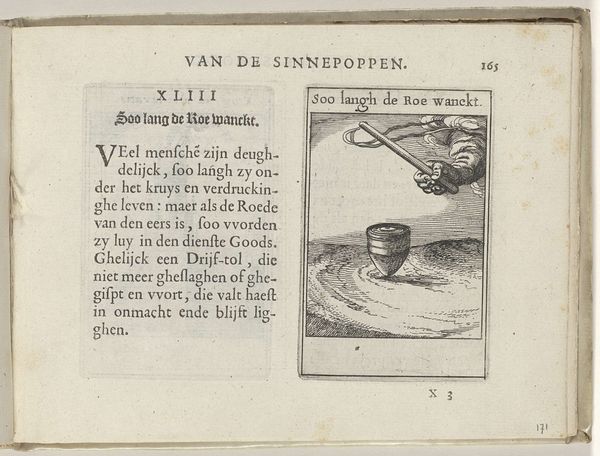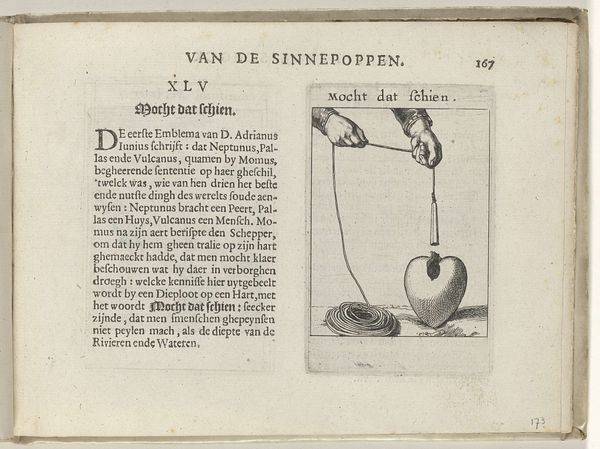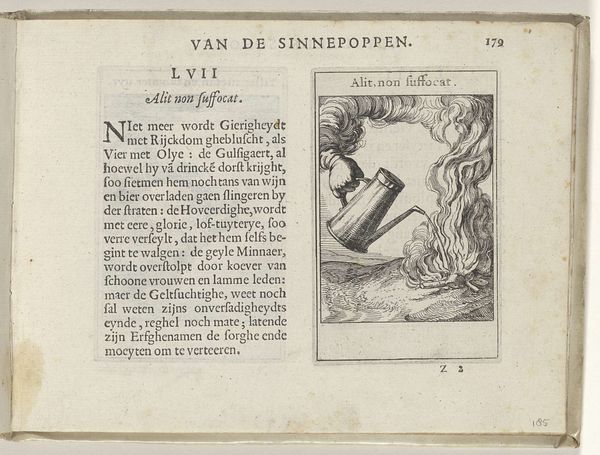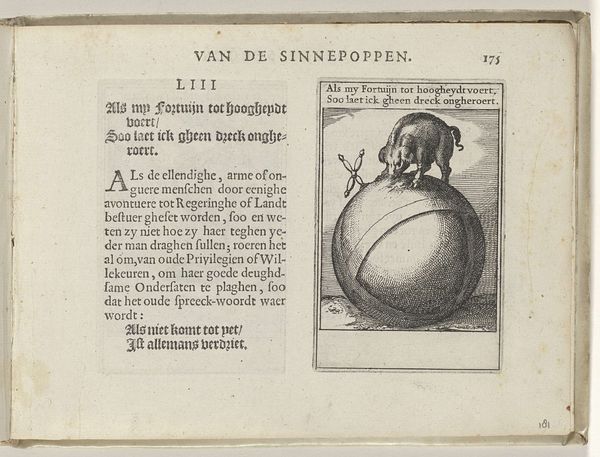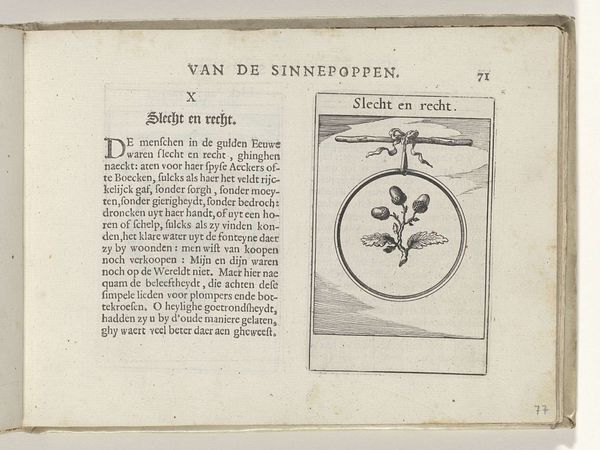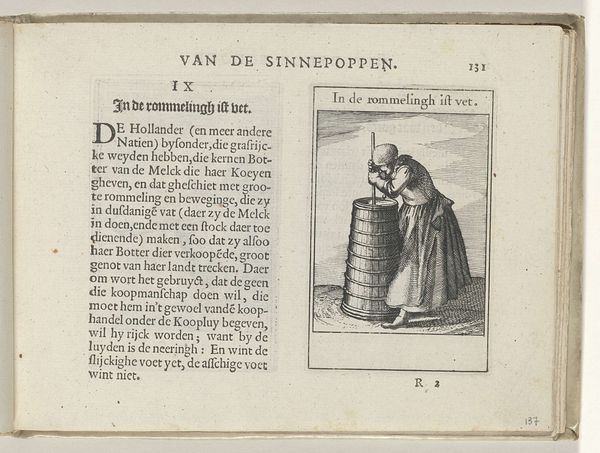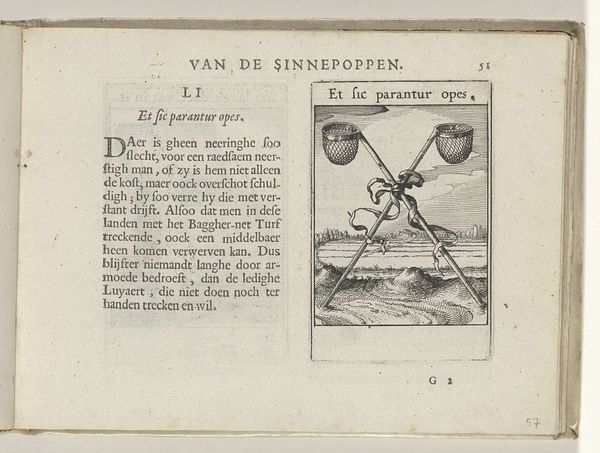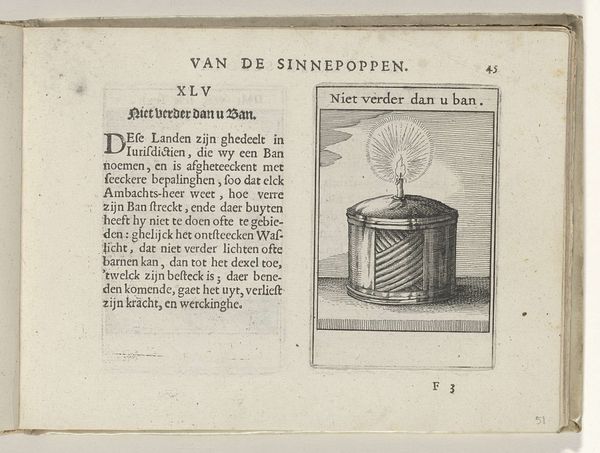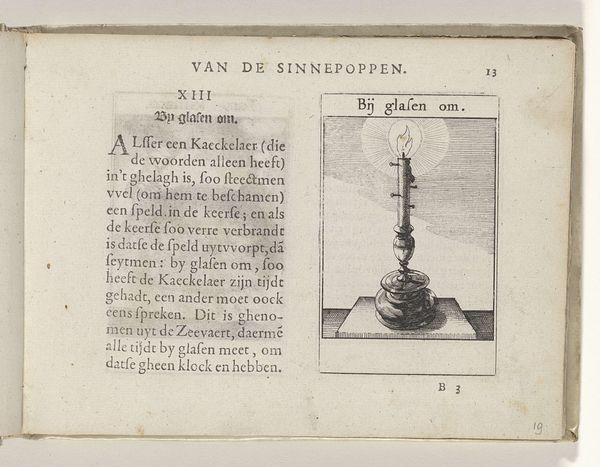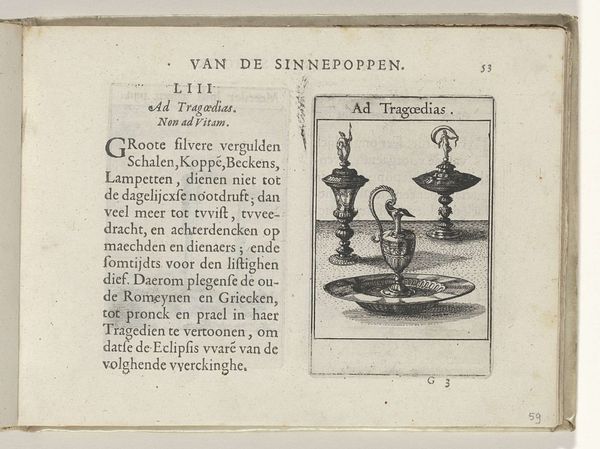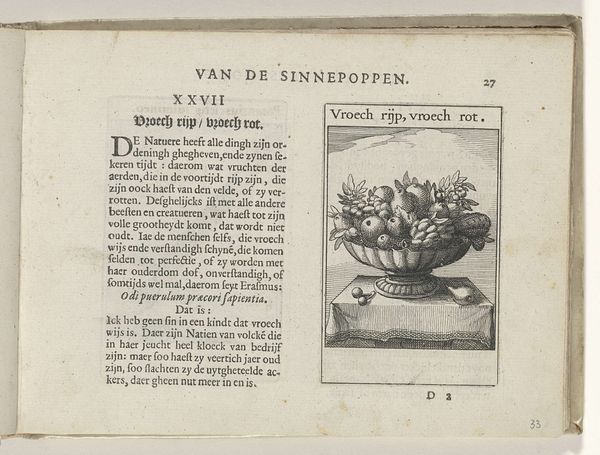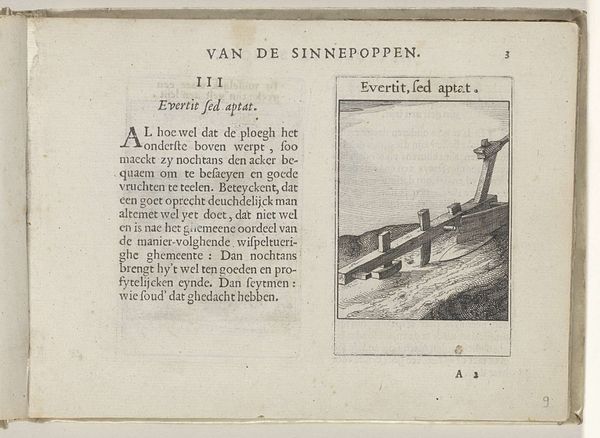
print, engraving
#
allegory
# print
#
11_renaissance
#
history-painting
#
engraving
Dimensions: height 137 mm, width 188 mm, height 95 mm, width 60 mm
Copyright: Rijks Museum: Open Domain
Curator: This print is entitled "LIX Saepe Soloecismum" created in 1614 by Roemer Visscher and held at the Rijksmuseum. It looks like an engraving. Editor: It does. I am interested in how such a mundane object, a balance scale, is imbued with such a distinct atmosphere. The scale seems to be weighing two drastically unequal masses... a small bell on one side, and a huge pouch on the other...What do you see in this piece? Curator: Indeed. The disproportion is significant, isn’t it? The work invites us to analyze its visual composition, to assess how it presents the conceptual and tangible elements in symbolic opposition. I see a carefully arranged allegory of imbalance and perhaps, injustice. Note the contrast of light and shadow playing across the surfaces. How does the materiality contribute to the overall meaning? Editor: It really reinforces a contrast between reason and irrationality... the bag seems irrational in size in comparison to the bell and everything it overwhelms and overshadows... Are you suggesting that these components create tension through a kind of visual argument, and in your eyes that tension drives meaning? Curator: Precisely. The formal qualities of the artwork, from the contrasting textures to the strategic placement of elements within the frame, speak volumes. Even the composition's horizontality establishes the sense of equilibrium as inherently flawed. A simple scale on uneven ground would signify corruption and is thus unbalanced due to inherent problems of moral fallibility. Do you perceive any dynamism despite the still nature of the scene? Editor: Looking closely now, I realize how unbalanced the composition seems... How the bell on one side hangs, the shadows, the bag seems to weigh a great deal... Now I understand your interpretation; it’s as if Visscher implies all reasoning contains a critical error because justice may just be, an imbalanced scale! Curator: A fine observation, a direct relationship of inherent disproportion as the subject's intent. This reflects on formal, thematic unity... I must ask that we explore together new works as well! Editor: Absolutely, I have enjoyed exploring form as a means to meaning with you today!
Comments
No comments
Be the first to comment and join the conversation on the ultimate creative platform.
